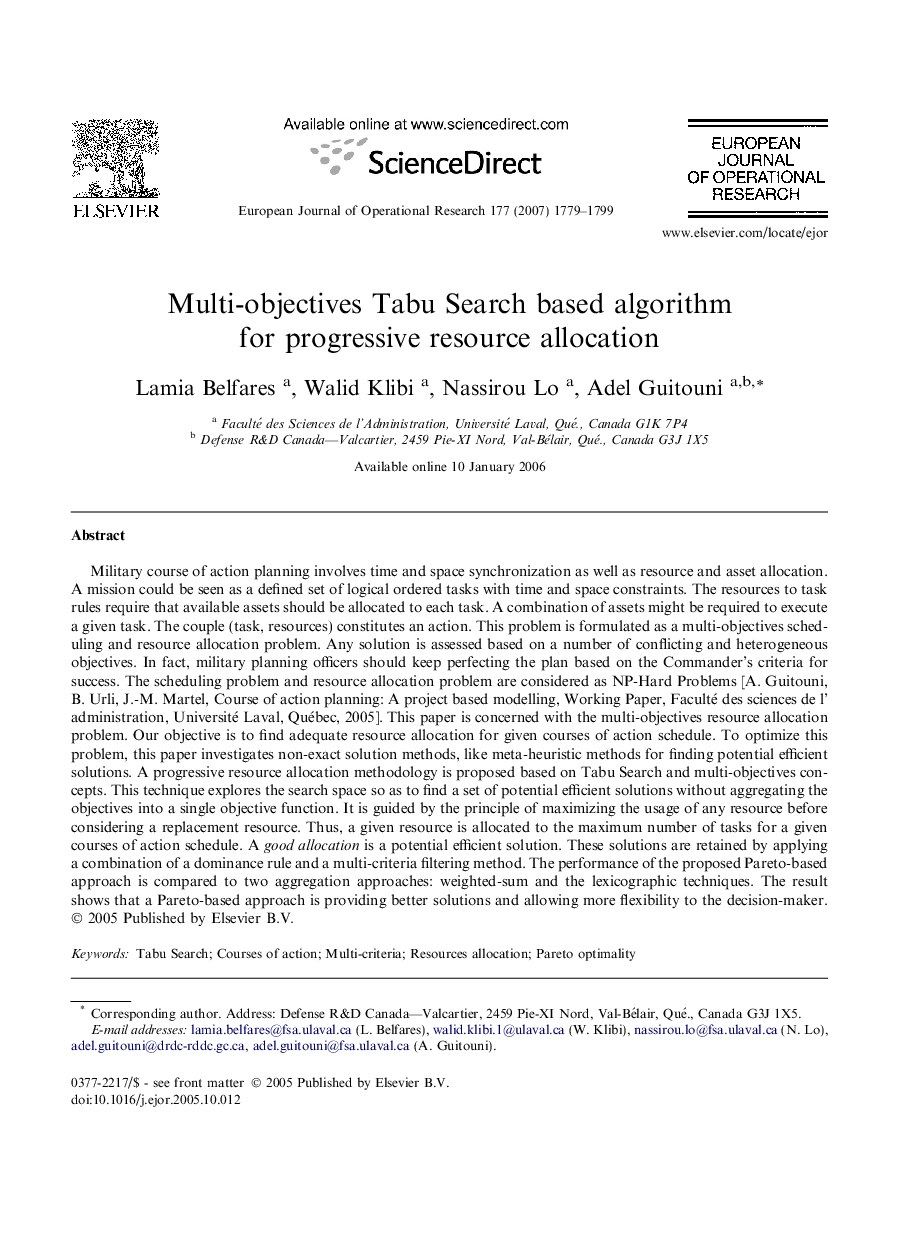| Article ID | Journal | Published Year | Pages | File Type |
|---|---|---|---|---|
| 483268 | European Journal of Operational Research | 2007 | 21 Pages |
Military course of action planning involves time and space synchronization as well as resource and asset allocation. A mission could be seen as a defined set of logical ordered tasks with time and space constraints. The resources to task rules require that available assets should be allocated to each task. A combination of assets might be required to execute a given task. The couple (task, resources) constitutes an action. This problem is formulated as a multi-objectives scheduling and resource allocation problem. Any solution is assessed based on a number of conflicting and heterogeneous objectives. In fact, military planning officers should keep perfecting the plan based on the Commander’s criteria for success. The scheduling problem and resource allocation problem are considered as NP-Hard Problems [A. Guitouni, B. Urli, J.-M. Martel, Course of action planning: A project based modelling, Working Paper, Faculté des sciences de l’ administration, Université Laval, Québec, 2005]. This paper is concerned with the multi-objectives resource allocation problem. Our objective is to find adequate resource allocation for given courses of action schedule. To optimize this problem, this paper investigates non-exact solution methods, like meta-heuristic methods for finding potential efficient solutions. A progressive resource allocation methodology is proposed based on Tabu Search and multi-objectives concepts. This technique explores the search space so as to find a set of potential efficient solutions without aggregating the objectives into a single objective function. It is guided by the principle of maximizing the usage of any resource before considering a replacement resource. Thus, a given resource is allocated to the maximum number of tasks for a given courses of action schedule. A good allocation is a potential efficient solution. These solutions are retained by applying a combination of a dominance rule and a multi-criteria filtering method. The performance of the proposed Pareto-based approach is compared to two aggregation approaches: weighted-sum and the lexicographic techniques. The result shows that a Pareto-based approach is providing better solutions and allowing more flexibility to the decision-maker.
